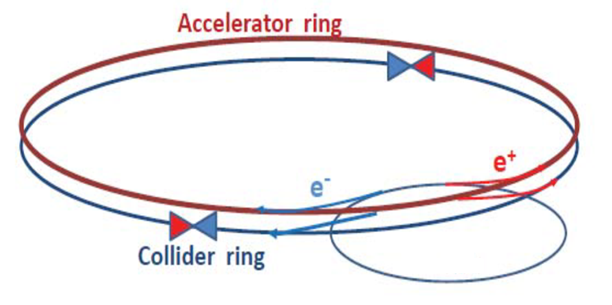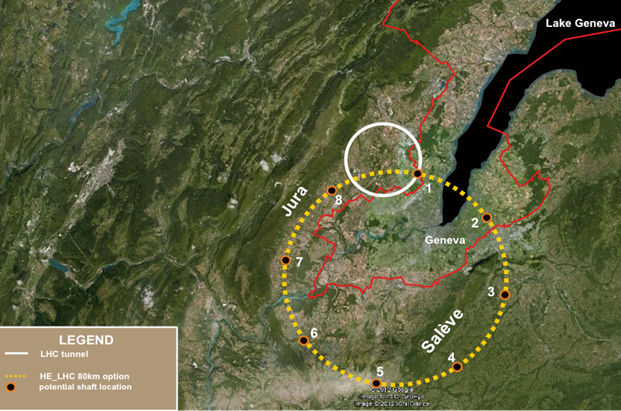About FCC-ee (TLEP)
About FCC-ee (TLEP)
FCC-ee (TLEP) is a high luminosity electron-positron collider to study the Higgs boson and physics at the electroweak scale. This machine could be the precursor of a 80-100 TeV hadron collider (VHE-LHC or FCC-hh) as part of a long-term vision envisioned for CERN.
TLEP has enormous potential for accurate Higgs measurements, as well as measurements of unprecedented precision at the Z peak, the WW threshold and the ttbar threshold. Its physics programme can pave the way towards the discovery of physics beyond the standard model by testing the closure of the latter. It would enable to measure the Higgs boson properties with precisions not achievable at other machines. This ambitious project nevertheless relies on the evolution of proven technology.
Our initial studies show that circular colliders of this size offer a series of advantages: Very high luminosity, excellent reliability, many interaction points, a very rich electroweak programme, favorable experimental environment, and relatively low cost. No showstoppers have been identified. Since such a machine would be "burning up" beams so efficiently (beam lifetimes due to physics processes is tens of minutes), a top-up scheme is envisaged (below).
|
Schematic for the TLEP collider |
Possible site layout for the VHE-LHC/TLEP complex |
The 80-100 km tunnel envisioned for TLEP could also serve to build a 100 TeV proton proton collider, VHE-LHC.
We consider the TLEP/VHE-LHC concept to be highly interesting and deserving a detailed study. Depending on what is discovered at the LHC when it runs close to its design energy, TLEP might provide a very attractive possibility for the medium and long term program in particle physics.
See also (on http://tlep.web.cern.ch):
- Main parameters of TLEP at different energies
- Challenges of TLEP and LEP3
- Questions to be addressed by the design study
- Frequently asked questions




